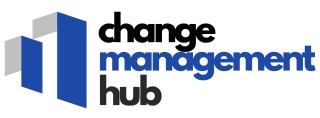
Understanding the Role of a Product Manager in Change Management
Decoding the Responsibilities and Impact in Change Management
In today's fast-paced business environment, the role of a product manager is increasingly pivotal in facilitating change management. Product managers are often seen as the linchpins in this process, bridging the gap between technical teams and strategic goals, ensuring that company initiatives align with user needs and market demands. But what does this entail in practical terms? A product manager’s work involves crafting and managing a product portfolio that not only meets the current market demands but also anticipates future trends. The ability to anticipate user needs and align with the company’s vision is crucial. A comprehensive understanding of product development phases, from ideation to launch, equips you to effectively contribute to change management. Moreover, experience with digital tools and software solutions enhances your approach to managing change adeptly. As a product manager, your goal is to create strategies that support smooth transitions during organizational changes. Whether it's introducing new products or refining existing ones, your involvement is a critical step in ensuring that transitions are successful. Your portfolio should reflect your capacity for both technical product management and strategic foresight. In turn, this underscores your value in the increasingly complex landscape of product management. Product managers must also display leadership in their approach to change. This involves not only technological proficiency but soft skills such as communication and collaboration. These are essential for working across different teams and engaging stakeholders in a manner that fosters trust and buy-in. To further explore this topic, consider visiting our article on understanding Meisterplan's weighted scoring for effective change management to gain insights into implementing effective strategies. In summary, the role of a product manager in change management is multifaceted, encompassing strategic planning, team leadership, and continuous evaluation. The competencies developed in these areas will not only enhance your own manager portfolio but will also propel your career forward in an ever-evolving market.Key Elements of a Successful Product Manager Portfolio
Significant Sections of an Exceptional Portfolio
Crafting a compelling product management portfolio can be daunting, but focusing on the key elements can make a significant impact. Building an impressive presentation of your work highlights the journey from mere ideas to successfully managed products and demonstrates your worth as a potential asset to any company. Consider these components as indispensable parts of your portfolio:
- Case Studies and Projects: Demonstrating past projects with clear objectives, strategies, and outcomes showcases your technical capabilities and strategic thinking. Potential employers are often interested in real-world scenarios rather than theoretical knowledge. Documenting the steps you took to bring a project to completion delivers a clear picture of your experience.
- Metrics and Outcomes: Include quantifiable results from your projects that showcase your ability to drive user growth, manage budgets, or boost product sales. Metrics give a tangible measure of your effectiveness as a product manager and help justify your potential salary.
- Tools and Techniques Used: Highlight the software and tools you're proficient in, such as product management platforms and collaboration tools that aid in product development and strategy. This speaks to your technical knowledge and your adaptability to new environments.
- Product Portfolio: Present a diverse range of products you've managed to exhibit your versatility and expertise across different domains. Use portfolio examples to illustrate how you've led teams to develop products from concept to launch.
- Reviews and Testimonials: If possible, include feedback from past colleagues or managers. These endorsements can strengthen your credibility and show proof of your leadership qualities and interpersonal skills.
To deepen your understanding of how to structure your portfolio effectively, consider exploring strategies in interim management for successful change. Embracing such principles ensures your portfolio not only captures your past achievements but also sets a dynamic vision for growth and adaptation in future roles.
Showcasing Change Management Projects
Effective Presentation of Change Management Projects
Crafting a compelling product manager portfolio means not only showcasing your technical prowess but also highlighting your ability to drive change within an organization. Successfully illustrating your experience with change management projects can significantly bolster your profile and position you as a versatile and transformational leader. To effectively present these projects in your management portfolio, consider the following strategies:- Highlight Specific Projects: Choose a selection of change management initiatives you've been involved in that had a meaningful impact on the company. Including detailed portfolio examples can clearly demonstrate your capability to navigate complex project dynamics and deliver results.
- Include Real-Life Case Studies: Provide concise case studies within your portfolio that walk the reader through the challenges, strategy, implementation, and outcomes of your change management efforts. Emphasizing your work on product development or strategic adjustments illustrates your role in tangible improvements.
- Quantify Your Contributions: Wherever possible, use metrics and data to underline your achievements. For instance, how your decisions led to enhanced user engagement or increased efficiency in product marketing and management could demonstrate your proficiency. Quantitative data can help validate your claims during interviews.
- Emphasize Collaborative Skills: Change management often involves cross-functional teams. Highlight your role in bringing different teams together, such as working with technical product managers or marketing managers. Illustrating your leadership in coordinating efforts and aligning priorities enhances your portfolio's narrative.
Highlighting Soft Skills and Leadership Qualities
Demonstrating Interpersonal and Leadership Acumen
In the realm of product management, technical prowess must harmoniously blend with interpersonal skills and leadership acumen to drive successful change management initiatives. While many focus on the tangible elements of a portfolio, it is these softer skills that often make the difference between a good product manager and a great one.- Team Collaboration: Highlight your ability to work with diverse teams, illustrating your role in bridging gaps between departments and how you fostered a culture of cooperation and innovation. Include examples of cross-functional teams you've worked with or led successfully.
- Communication: Describe how effective communication strategies facilitated product changes or innovations. A product manager must convey complex ideas simply, whether addressing technical teams or conducting user-focused presentations.
- Empathy: Demonstrating empathy toward user needs and team dynamics is crucial. Your portfolio should reflect an understanding of how products impact users at a human level, showcasing how strategic decisions were guided by user feedback and insights.
- Change Advocacy: Display your experience as a change leader. Include case studies where your leadership was pivotal in overcoming resistance and successfully implementing change. Your ability to advocate for necessary product adjustments will resonate with companies seeking adaptability.
- Vision and Strategy: Articulate how your vision aligns with the company’s goals. Identify how product strategy was developed and executed to enhance business outcomes.
- Decision Making: Highlight examples where you leveraged both data-driven and intuitive approaches to make impactful decisions. It's crucial to show how your decisions contributed positively to the organization.
- Conflict Resolution: Address your experience in navigating challenges and resolving conflicts within teams or with stakeholders. Explain the approaches you adopted and the outcomes achieved.
Utilizing Digital Tools to Enhance Your Portfolio
Maximizing Portfolio Impact with Digital Solutions
In today’s competitive landscape, leveraging digital tools can significantly enhance your product manager portfolio, turning it into a dynamic showcase of your skills and experience. By incorporating these tools, you not only enhance the presentation of your projects but also demonstrate your technical acumen and ability to adapt to advanced software solutions—qualities coveted in product managers.
- Leverage Professional Networking Platforms: Utilizing platforms like LinkedIn or industry-specific networks allows you to display your achievements, projects, and skills in a professional manner, demonstrating your engagement with the product management community.
- Interactive Portfolio Websites: A personal website can be an effective medium to showcase your work and create interactive product demonstrations. This not only highlights your technical product skills but also your creativity in presenting your work.
- Case Study Creation Tools: Software that aids in developing comprehensive case studies can be used to present your change management projects, demonstrating your strategic and analytical capabilities. This is a vital step to illustrate your problem-solving skills and the impact of your interventions on user engagement and company growth.
- Project Management Software: Tools such as Trello or Jira not only help in tracking project progress but can also be a part of your product management portfolio. Displaying your proficiency with these tools showcases your organization skills and efficiency in managing product development teams.
Integrating these digital tools into your manager portfolio reflects your ability to work in evolving technical environments, a trait vital for effective product management and enhancing your interview readiness. By demonstrating your proficiency with these tools, you convey readiness to strategically tackle challenges and excel in roles across various product portfolios.
Continuous Improvement and Portfolio Updates
Regularly Revise and Refine Your Portfolio
To maintain its relevance and impact, a product management portfolio requires continuous improvement. As a product manager, it's crucial to consistently update your portfolio with the latest achievements, projects, and experiences. By regularly revisiting your collection of work, you ensure that it accurately represents your evolving expertise and increasing value to potential employers or stakeholders. Consider integrating these practices:- Review Past Projects: Regularly assess your completed projects and highlight those which demonstrate meaningful contributions to change management, showcasing your adaptability in different scenarios.
- Update with New Experiences: Each new experience or project brings unique challenges and learning opportunities. Incorporate these into your portfolio to reflect your growth as a product manager.
- Integrate Feedback: Gather insights from colleagues, managers, and mentors to refine your portfolio. Constructive criticism helps identify areas for improvement and can elevate the quality of your portfolio.
- Highlight Career Progression: As you climb the career ladder, update your portfolio to include leadership roles, increased responsibilities, and any teams you have successfully managed.













